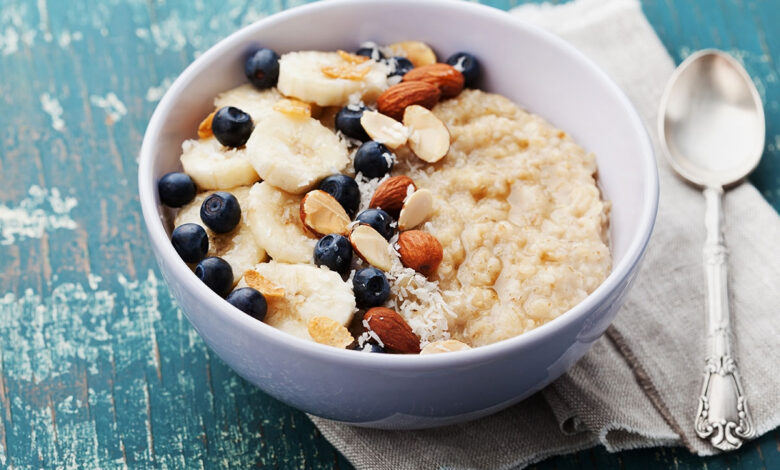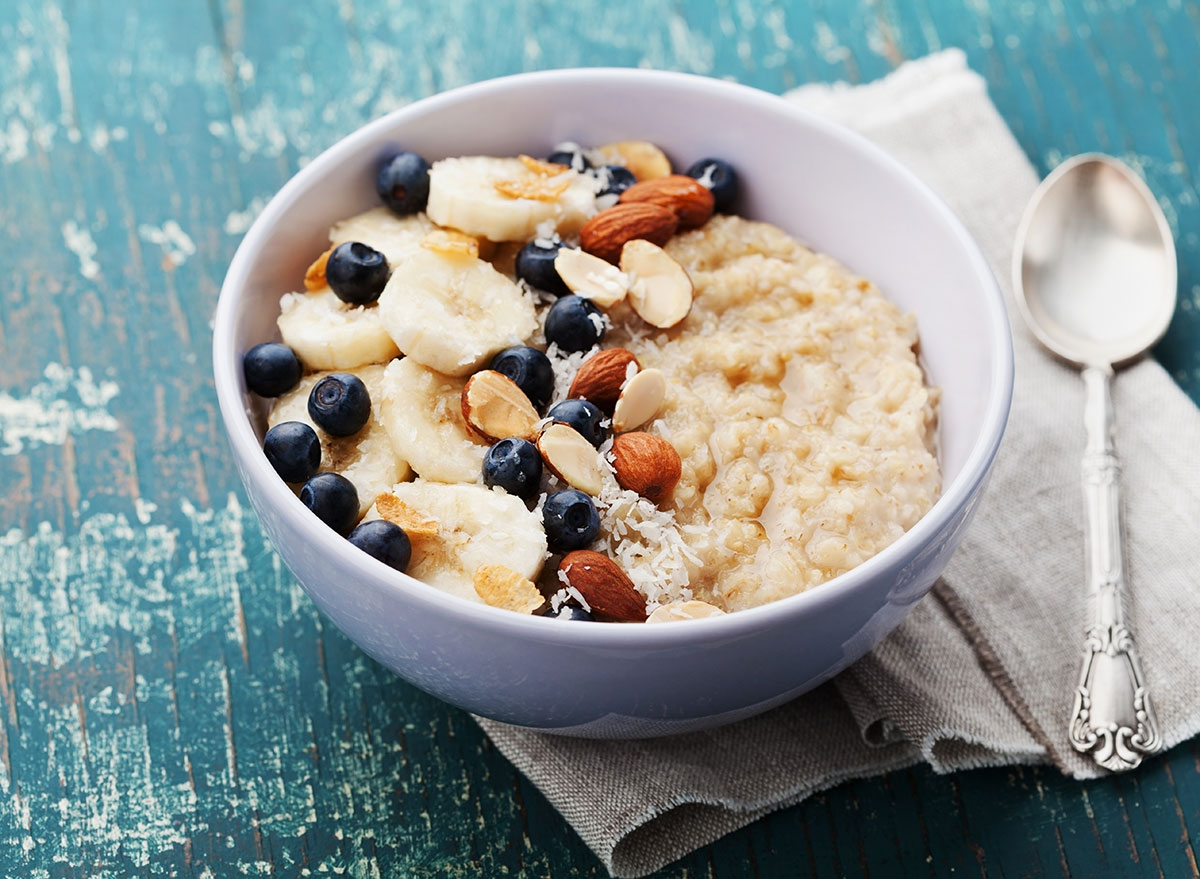
Have You Been Eating Almonds All Wrong?
Have you been eating almonds all wrong? You might be surprised to learn that there’s more to this popular nut than meets the eye. From misconceptions about their consumption to the best ways to incorporate them into your diet, we’re diving deep into the world of almonds to uncover the secrets to maximizing their health benefits.
Almonds, often hailed as a superfood, are packed with nutrients and offer a range of health benefits. However, many people are unaware of the optimal ways to consume these tiny powerhouses. We’ll explore the science behind almond consumption, debunk common myths, and provide practical tips for enjoying almonds to the fullest.
The Almond Myth
The phrase “eating almonds all wrong” might seem like a catchy title, but it’s actually a common misconception. Almonds, often lauded as a healthy snack, are often misunderstood, leading to various myths and misconceptions surrounding their consumption. Let’s delve into some of these misconceptions and separate fact from fiction.
Common Misconceptions About Almond Consumption
Almonds are a versatile and nutritious snack, but their consumption is often shrouded in misconceptions. Here are some of the most prevalent myths surrounding almonds:
- Almonds are fattening:This is a common misconception. While almonds are high in healthy fats, they are also a good source of fiber and protein, which help keep you feeling full and satisfied. Studies have shown that incorporating almonds into a balanced diet can actually contribute to weight management.
- Almonds are only for weight loss:Almonds are beneficial for overall health, not just weight loss. They are packed with nutrients like vitamin E, magnesium, and manganese, which support various bodily functions.
- You can eat as many almonds as you want:While almonds are healthy, moderation is key. Overconsumption can lead to digestive discomfort and potential nutrient imbalances. A handful of almonds (about 23) per day is generally considered a healthy serving size.
- All almonds are created equal:The type of almond can impact its nutritional profile. For instance, blanched almonds are lower in fiber and antioxidants compared to raw almonds. Choosing raw almonds offers the most nutritional benefits.
Real-World Examples of Misunderstandings
The misconceptions about almonds are often reflected in real-world scenarios.
- People avoiding almonds due to calorie concerns:Many individuals avoid almonds due to their calorie content, failing to recognize the satiety they provide and their overall nutritional benefits.
- Consuming only blanched almonds:Many individuals opt for blanched almonds due to their taste and texture, unaware of the potential loss of nutrients in the blanching process.
- Overconsumption of almonds:Some individuals consume excessive amounts of almonds, leading to digestive discomfort and potential nutrient imbalances. It’s crucial to remember that moderation is key.
Almond Consumption
Almonds, a powerhouse of nutrients, are a popular snack and ingredient. However, understanding the optimal ways to consume them can significantly amplify their health benefits. This section delves into the right way to incorporate almonds into your diet for maximum impact.
Best Times to Consume Almonds
The timing of almond consumption can influence their effectiveness for different purposes.
- For Energy Boost:Consuming almonds in the morning provides a sustained release of energy throughout the day. This is due to their healthy fats and fiber content, which help regulate blood sugar levels.
- For Post-Workout Recovery:Almonds are an excellent post-workout snack as they provide protein and essential nutrients for muscle recovery and repair.
- For Sleep Improvement:Consuming almonds before bed can promote better sleep due to their melatonin content, a hormone that regulates sleep cycles.
Appropriate Portion Sizes
The appropriate portion size of almonds depends on individual needs and dietary goals.
So, you’ve been munching on almonds like a champ, but have you ever thought about soaking them overnight? It’s a game-changer! Soaking them unlocks more nutrients and makes them easier to digest. Speaking of healthy and satisfying, check out these 9 hearty winter soups under 360 calories for a warm and comforting meal.
And hey, don’t forget to add some soaked almonds for a boost of protein and healthy fats to your soup! You’ll be thanking yourself later for those soaked almonds, I promise.
- General Recommendation:A general guideline is to consume 1/4 cup (approximately 23 almonds) per day.
- Weight Management:For weight management, a smaller portion of 1/8 cup (approximately 11 almonds) is recommended.
- Athletes:Athletes may benefit from consuming a larger portion of 1/2 cup (approximately 46 almonds) per day, especially after workouts.
Maximizing Almond Benefits
To maximize the health benefits of almonds, consider the following:
- Soaking:Soaking almonds in water overnight can help reduce the phytic acid content, making nutrients more readily available.
- Variety:Include almonds in various forms, such as raw, roasted, sliced, or in almond butter, to enjoy their diverse flavors and nutritional profiles.
- Combination:Combine almonds with other healthy foods, such as fruits, vegetables, or yogurt, for a balanced and nutritious snack or meal.
Almond Varieties
Almonds are a versatile nut, enjoyed in various forms. Understanding the different varieties helps you choose the best option for your needs and preferences. This section delves into the distinct characteristics of raw, roasted, blanched, and flavored almonds, comparing their taste, texture, nutritional value, and typical uses.
Almond Variety Comparison, Have you been eating almonds all wrong
The following table provides a comprehensive comparison of different almond varieties:
| Variety | Taste | Texture | Nutritional Value | Uses |
|---|---|---|---|---|
| Raw | Mild, slightly sweet | Firm, crunchy | High in fiber, protein, and vitamin E | Snacks, salads, trail mixes, baking |
| Roasted | Rich, nutty flavor | Crisp, slightly chewy | Similar to raw almonds, with slightly lower moisture content | Snacks, salads, trail mixes, baking, desserts |
| Blanched | Mild, sweet | Soft, smooth | Similar to raw almonds | Baking, almond milk, almond butter |
| Flavored | Various, depending on flavor | Similar to roasted or blanched almonds | Nutritional value varies depending on flavoring | Snacks, desserts, baking |
Raw Almonds
Raw almonds are the natural, unprocessed form of the nut. They offer a mild, slightly sweet flavor and a firm, crunchy texture. Raw almonds are an excellent source of fiber, protein, vitamin E, and other essential nutrients. They are commonly enjoyed as a healthy snack, added to salads and trail mixes, or used in baking.
Roasted Almonds
Roasted almonds undergo a heat treatment process that enhances their flavor and texture. Roasting intensifies the natural nutty flavor and adds a slight crispness to the almonds. While roasting doesn’t significantly alter the nutritional profile, it does reduce the moisture content slightly.
Roasted almonds are a popular snack option and are often used in salads, trail mixes, baking, and desserts.
Blanched Almonds
Blanched almonds have their outer skin removed, resulting in a smooth, soft texture. The blanching process does not significantly alter the taste or nutritional value of the almonds. Blanched almonds are commonly used in baking, as their smooth texture blends well into batters and doughs.
They are also a key ingredient in almond milk and almond butter.
Flavored Almonds
Flavored almonds are almonds that have been coated with various flavorings, such as salt, sugar, honey, or spices. The flavoring process can enhance the taste and texture of the almonds, offering a wide range of options for different preferences. The nutritional value of flavored almonds can vary depending on the specific flavoring used.
Have you been eating almonds all wrong? You might be surprised to learn that there’s a whole world of almond recipes beyond just snacking on them straight from the bag. And speaking of surprises, why not bring a splash of color to your Thanksgiving table this year?
Check out these 5 ways to fill your Thanksgiving table with color for a festive and vibrant spread. And while you’re at it, try incorporating almonds into your colorful dishes – you might just discover a new favorite way to enjoy them!
Flavored almonds are often enjoyed as a snack, used in desserts, and added to baking recipes.
You know how everyone’s always telling you to eat almonds for a healthy snack? Well, what if I told you there’s a whole other way to enjoy them, beyond just munching on them raw? It turns out, soaking almonds overnight can unlock a whole new level of flavor and nutrients! And speaking of healthy snacks, have you ever wondered if can pasta be healthy ?
It’s a question I’ve been pondering lately, especially since I’ve been experimenting with different ways to enjoy almonds. Soaking them definitely seems to be a game-changer, and it might just change how you think about healthy snacking, too!
Almonds in the Kitchen: Have You Been Eating Almonds All Wrong
Almonds, with their delicate crunch and nutty flavor, are a versatile ingredient that can elevate dishes from simple to spectacular. Their culinary applications extend far beyond the traditional snack or trail mix, offering a world of possibilities for the adventurous cook.
Almond-Infused Dishes
Almonds can be incorporated into a wide range of dishes, adding texture, flavor, and nutritional value. Here’s a glimpse into their culinary versatility:
| Dish Type | Almond Applications |
|---|---|
| Breakfast | Almond milk, almond butter, almond granola, almond flour pancakes, almond-crusted French toast |
| Lunch | Almond-stuffed chicken breast, almond-crusted salmon, almond salad with quinoa, almond pesto pasta |
| Dinner | Almond-coated vegetables, almond-stuffed pork tenderloin, almond-crusted chicken, almond-infused rice pilaf |
| Snacks | Almond butter and banana sandwich, almond brittle, almond biscotti, roasted almonds with herbs and spices |
Tips for Incorporating Almonds into Different Cuisines
Mediterranean Cuisine
Almonds are a staple in Mediterranean cuisine, often used in dishes like:
- Almond-stuffed dates: A sweet and savory treat, often served as a dessert or snack.
- Almond-crusted fish: A flavorful and crispy coating for fish, often served with lemon and herbs.
- Almond milk: A popular dairy-free alternative, used in smoothies, soups, and desserts.
Asian Cuisine
Almonds are often used in Asian cuisine, particularly in:
- Stir-fries: Sliced almonds add a crunchy texture and nutty flavor to stir-fries.
- Almond-infused sauces: Almonds can be ground into a paste and used to create flavorful sauces for stir-fries and other Asian dishes.
- Almond cookies: A popular dessert in many Asian countries, often flavored with sesame seeds and other spices.
Indian Cuisine
Almonds are a key ingredient in many Indian dishes, including:
- Almond-based curries: Almonds are often ground into a paste and used to create rich and creamy curries.
- Almond halwa: A sweet and decadent dessert made with almonds, sugar, and milk.
- Almond milk: Used in many Indian dishes, especially those that are vegan or dairy-free.
The Health Benefits of Almonds
Almonds, a versatile and nutritious nut, offer a wide array of health benefits due to their impressive nutritional profile. They are a rich source of essential nutrients, including healthy fats, protein, fiber, vitamins, and minerals, which contribute to overall well-being and disease prevention.
Nutritional Value and Impact on Health
Almonds are a powerhouse of nutrients, making them a valuable addition to a balanced diet. Their nutritional profile includes:
- Healthy Fats:Almonds are rich in monounsaturated and polyunsaturated fats, which are beneficial for heart health. These fats help lower bad cholesterol (LDL) levels and raise good cholesterol (HDL) levels, reducing the risk of heart disease.
- Protein:Almonds provide a good source of protein, which is essential for building and repairing tissues, maintaining muscle mass, and supporting satiety.
- Fiber:The high fiber content in almonds promotes digestive health, regulates blood sugar levels, and contributes to feelings of fullness.
- Vitamins and Minerals:Almonds are a good source of vitamin E, a powerful antioxidant that protects cells from damage, as well as magnesium, which plays a vital role in muscle function, nerve function, and blood sugar control. They also contain other essential minerals like potassium, calcium, and iron.
Almonds and Heart Health
Numerous studies have demonstrated the positive impact of almond consumption on heart health. Almonds’ high content of monounsaturated fats, fiber, and magnesium contributes to lowering LDL cholesterol levels, reducing blood pressure, and improving blood vessel function.
A study published in the
American Journal of Clinical Nutrition* found that consuming almonds as part of a heart-healthy diet significantly reduced LDL cholesterol levels in individuals with high cholesterol.
Almonds and Blood Sugar Control
The fiber content in almonds helps regulate blood sugar levels, making them a beneficial snack for individuals with diabetes or those at risk of developing the condition. Fiber slows down the absorption of sugar into the bloodstream, preventing sharp spikes and crashes in blood sugar.
Research published in the
Journal of the American College of Nutrition* indicated that almond consumption was associated with improved blood sugar control in individuals with type 2 diabetes.
Almonds and Weight Management
Almonds are a calorie-dense food, but their high protein and fiber content promote feelings of fullness, helping to control appetite and prevent overeating.
A study published in the
International Journal of Obesity* found that consuming almonds as part of a weight-loss diet led to greater weight loss and fat loss compared to a diet without almonds.
Almonds and Cognitive Function
Almonds are a good source of vitamin E and other antioxidants, which are believed to protect brain cells from damage and improve cognitive function.
Research suggests that a diet rich in almonds may contribute to improved memory, learning, and overall brain health.
Almond Storage and Shelf Life

Almonds are a versatile and nutritious snack, but their shelf life depends on how they are stored. Proper storage can help maintain their freshness, flavor, and nutritional value.
Storing Almonds for Maximum Freshness
To ensure your almonds stay fresh and flavorful for as long as possible, follow these storage guidelines:
- Store in an airtight container:This prevents oxidation and moisture absorption, which can lead to rancidity.
- Choose a cool, dark, and dry place:A pantry or cupboard is ideal. Avoid storing almonds in direct sunlight or humid areas.
- Refrigerate for longer shelf life:While almonds can be stored at room temperature for several months, refrigeration can extend their shelf life to up to a year.
- Freeze for extended storage:For even longer storage, you can freeze almonds in an airtight container or freezer bag. Frozen almonds can last for up to two years without significant loss of quality.
Almond Shelf Life in Different Storage Conditions
| Storage Condition | Shelf Life |
|---|---|
| Room Temperature (Airtight Container) | 3-6 months |
| Refrigerator (Airtight Container) | Up to 1 year |
| Freezer (Airtight Container or Bag) | Up to 2 years |
Identifying Spoiled Almonds
While almonds are generally very durable, there are signs to look for that indicate they have gone bad:
- Rancid odor:If the almonds have a stale, oily, or unpleasant smell, they have likely gone rancid.
- Discoloration:Almonds that have gone bad may appear darker or discolored, especially if they have been exposed to moisture or heat.
- Soft texture:Fresh almonds should be firm and crisp. If they feel soft or mushy, they may be spoiled.
If you notice any of these signs, it’s best to discard the almonds. Consuming spoiled almonds can lead to digestive issues or other health problems.
Conclusive Thoughts
Whether you’re a seasoned almond enthusiast or just starting to explore their benefits, understanding the nuances of almond consumption can make a world of difference. From choosing the right varieties to incorporating them creatively into your meals, this journey into the world of almonds is sure to leave you with a newfound appreciation for this versatile and nutritious nut.
So, let’s unlock the secrets to eating almonds the right way and reaping the full spectrum of their health-promoting properties.






